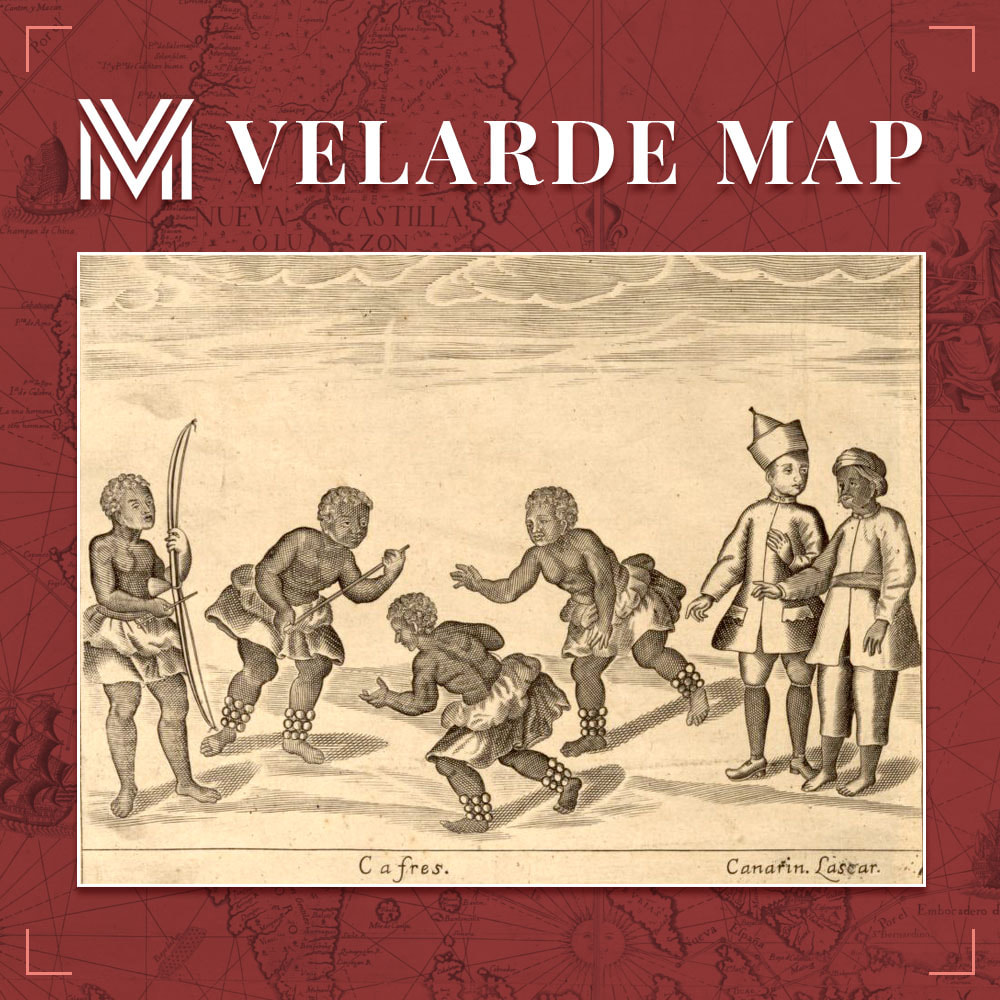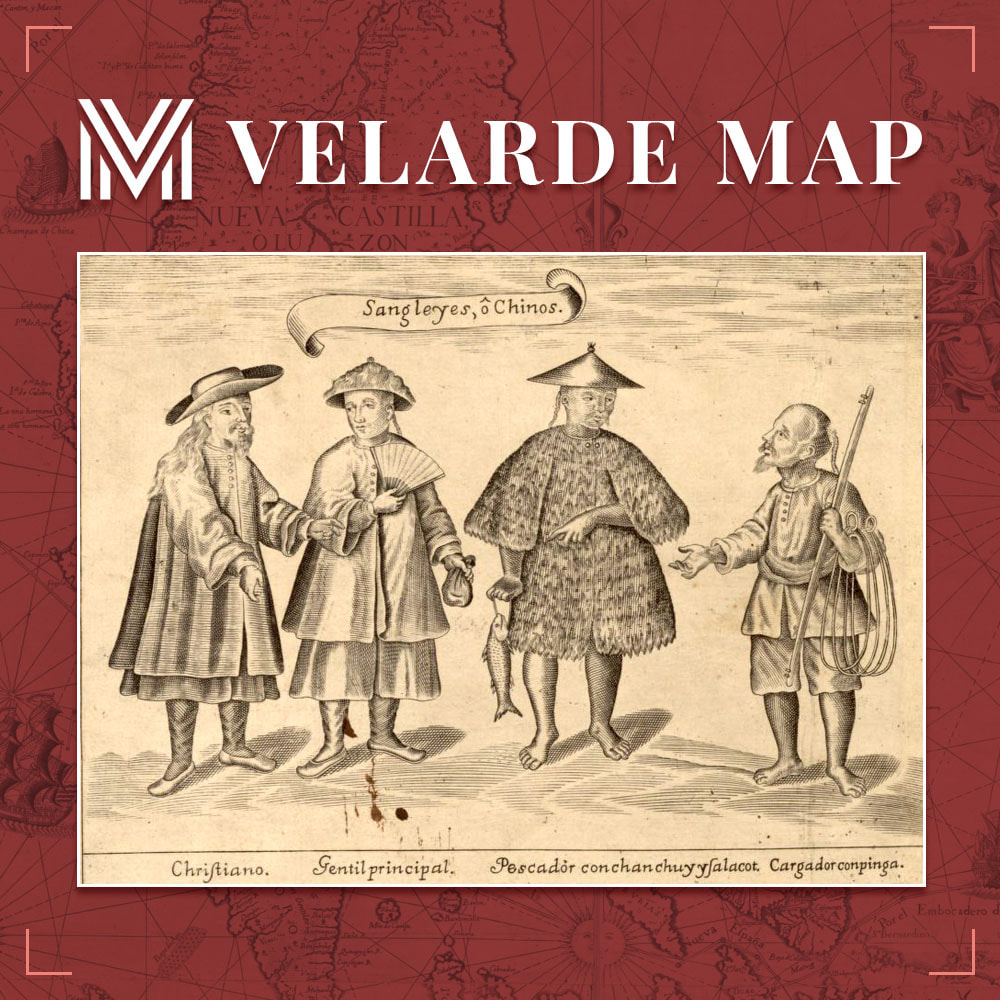
Cafres or Kafs are Malagasy and/or African-born residents of Réunion. They are frequently of mixed ancestry.
In contrast to other countries or locations in the southwest of Indian Ocean, the phrase is widely used in Réunion. It refers to “any individual whose phenotype can be traced back to more or less African and Malagasy ancestors,” according to sociologist Paul Mayoka’s essay “The Image of the Cafre.” Slave ethnic groups from Southeast Africa are also referred to as “slave ethnic clusters.”
From the 16th century to the middle of the twentieth century, a lascar was a sailor or militiaman from the Indian Subcontinent, Southeast Asia, the Arab world, British Somaliland, or other region east of the Cape of Good Hope who worked on European ships.
This panel showcasing the 18th century image of Cafres and Canarin Lascar in the Philppines is among the 12 vignettes featured in Murillo-Velarde 1734 Map.

Ang salitang Sangley ay matandang katawagan na ginamit sa Pilipinas para ilarawan ang mga Filipino na may dugong Tsino o may lahing Tsino.
Maraming bersyon ng interpretasyon ang salitang Sangley, lalo na’t ginagamit din ito sa mga pangalan ng makasaysayang lugar tulad ng Punta Sangley (Sangley Point), ang dating punong himpilan ng base ng hukbo ng Estados Unidos sa Cavite Peninsula. Ayon kay Go Bon Juan na isang manunulat, ang pinakakaraniwang tinatanggap na bersyon ng salitang “Sangley” ay nagmula sa Hokkien Chinese na “Pe̍h-ōe-jī” na nangangahulugang “negosyo” na tumutugma naman sa pamumuhay ng mga unang Tsino sa Pilipinas.
Ang karamihan ng mga manlalakbay, negosyante, at naninirahang Sangley sa Pilipinas noong panahon ng kolonyal ng Espanya ay nagmula sa katimugang bahagi ng Fujian at gumagamit ng lenggwaheng Hokkien. Sila ay nag-iwan ng ambag at marka sa kulturang Pilipino, lalo na sa larangan ng pagluluto.
Ang bahaging ito ng Mapa ng Murillo Velarde 1734 ay nagpapakita ng iba’t-ibang uri ng Sangleys ng panahong ito: Christianized Chinese, Non-Christian Chinese Trader, Mangingisdang Tsino, at Manggagawang Tsino.

The Spain’s Coat of Arms is a medieval insignia which signifies the dynasty of Spain. The current coat of arms for the monarch was adopted in 2014. Former rulers of Castile-León, Aragon, and Navarre are represented in the arms.
The Spanish monarch’s arms used to be much more complicated than they are now, displaying the arms of the empire’s different states. A simpler version of these arms, known as the lesser arms,
was also used; the lesser arms were a separate group of arms within the full arms’ core.
The Spanish royal coat of arms is prominently displayed in the Murillo Velarde 1734 Map’s upper-middle section.

